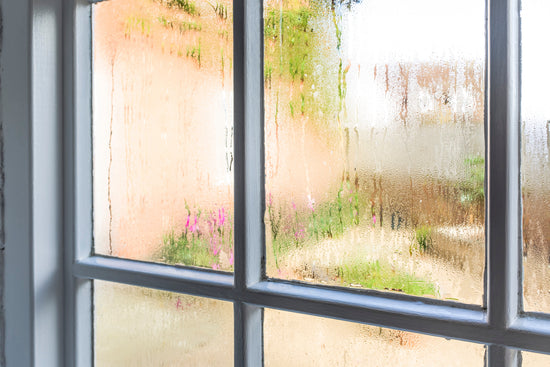Turn up the AC because here comes the heatwave!
While summertime means sun, shorts, sandals, and lots of swimming, it’s also the perfect time for some home maintenance.
To help you get started, we’ve rounded up a few tips for you to make sure your home is secure, safe, and ready for the summer.
Let’s get started!
Summer Home Maintenance Tip #1: Inspect Your AC Units
First thing first, make sure that your air conditioner is prepped and ready for the busy months ahead!
The last thing you want is for it to break down in peak-summer, which also happens to be the busiest time of the year for AC maintenance.
To prep your AC for the summer, it’s best to hire a professional to clean and tune it. They will take care of adjusting the refrigerant levels, fan-motor, compressor, controls, and they will also clean the unit and change the filters.

While your AC is being tuned, it’s also important to clean any ceiling fans or other fans with a damp cloth. And if you have tall ceilings, try using your vacuum cleaner to get to these hard-to-reach places.
Summer Home Maintenance Tip #2: Check Your Smoke & CO Alarms
If your smoke and carbon monoxide alarms are powered by a 9-volt battery, the battery should be replaced every 6 months.
A good strategy for keeping your batteries fresh is to create a digital reminder that alerts you when it’s time to replace them – one in January and another in June. This is something you can easily do with Google Calendar and other free scheduling tools.

After you’ve replaced the batteries, it’s important to test the alarm to make sure it’s working properly. To do this, simply hold the test button. It might take a few seconds, but a loud, ear-piercing alarm should sound.
If the sound is weak or nonexistent, the batteries might have lost their punch from sitting on a shelf too long – or your smoke alarm could be broken! Double-check by using a different set of batteries and testing the alarm again.
You should also consider installing a Notion Sensor next to your smoke alarm so that you can get alerts sent to your smartphone, even when you’re away.
Simply place a Notion Sensor near your UL-listed smoke or carbon monoxide alarm and receive a notification when the alarm sounds.
Summer Home Maintenance Tip #3: Clean Your Outdoor BBQ
Before you fire up the grill, it’s important to get it prepped first!
After a long winter, your barbecue is bound to have racked up some dust and grime, so it’s due for a good deep cleaning.

Here’s how to do it:
For gas grills, close the lid of the grill, turn up the heat to high, and let the grill cook for about a half-hour. Once the grill is cool, remove any grime with a grill brush. From there, wipe down the outside of the grill with a sponge and gentle cleaners. Lastly, clean out all the grill’s drip pans.
For charcoal grills, completely empty out the grill and wipe away any dusty residue with a damp cloth. Then, with hot soapy water, use a scrub brush or sponge to clean the inside and outside of the grill. Make sure to let the grill dry completely before using it.
Summer Home Maintenance Tip #4: Inspect the Condition of Your Roof
There’s nothing more important than the roof over your head! Unfortunately, checking on the condition of your roof isn’t something most people do on a regular basis.
Part of this is for practical reasons – your roof isn’t the easiest thing to access, especially if you don’t have a ladder. It can also be quite dangerous if it’s a multi-story building.
But here’s something you may not know: you don’t actually need a ladder to check on the condition of your roof! You can get a really good sense of your roof’s integrity (including if there’s any damage or replacements needed) by using binoculars.

Here are a few things to look for when inspecting your roof:
- Sagging that could indicate structural problems
- Any shingles that need repair or replacement
- Signs of cracking, leakage, split or damaged sealants around the roof flashings, chimney and roof joints
- Damage on the chimney cap and the caulking between the cap and the chimney.
If you’re looking for a second opinion about the condition of your roof or need a second option, you can also hire a roofing contractor, which costs around $40-80/hour.
Summer Home Maintenance Tip #5: Inspect Weather Stripping, Caulking & Vents
Next up, time to check those little cracks and crannies!
This one’s a little tedious and can take some time. But it’s very important to make sure window sills and door frames are free of rot and grime.
Holes or cracks in these places can become easy access points for small pests or insects such as termites or carpenter ants – not to mention a place for mold or mildew to build up.

In order to prevent this from occurring, you’ll need to examine the condition of the weather-stripping and caulking around your windows and doors. If you notice any damage, it’s best to play it safe and replace it.
While you’re up there inspecting the windows and door frames, it’s a great opportunity to give them a deep clean to wash away and unwanted mold or mildew.
Summer Home Maintenance Tip #6: Inspect Your Home Exterior for Loose or Rotted Siding
Similar to your windows and doors, the exterior of your home can be prone to loose materials or rotting that can cause pests or mold to build up.
In order to prevent this kind of damage, it’s a good idea to power wash the sides of your home. This will get rid of any dust, dirt, bird droppings, or tree sap.

Not only will it make your home look better, but you’ll rest assured that the exterior of your home is in strong condition.
It’s *very* important to keep in mind that power washing shouldn’t be used on all surfaces. Because they use very high pressures, they can be damaging to surfaces including: asphalt shingles, wood siding, old brick, windows, doors, stained wood, and painted surfaces that want to stay painted.
Summer Home Maintenance Tip #7: Clean and Inspect Your Patio, Driveway & Walkways
Cold weather, snow, and ice can all take a toll on your driveway and walkway – especially if water is seeping into the cracks.
That’s why each summer, it’s important to inspect these areas for any winter-related damage. This is key to avoiding any long-term (and costly) damage!
When inspecting your driveway and walkway, keep your eyes out for any cracks or holes that need filling. For cracks less than 1/2”, use a bottle of concrete crack filler – you should be able to find this at your local hardware store.

For holes or cracks greater than 1/2” and with a definitive boundary (i.e. a hole in the middle of your driveway, not on the edge), use a concrete patching compound. Note: if the crack is quite deep, you may have to apply in multiple layers, allowing each layer to dry before applying the next.
Next up, if you have a patio, it’s also important to check for signs of wear and tear. While some cracks or rot may look insignificant, they can lead to long-term damage if they aren’t dealt with right away!
Start by power washing your deck to get out any grime or debris that has been building up over the winter. From here, reseal your deck with a stain or seals from your local hardware store.
Summer Home Maintenance Tip #8: Open Your Pool!
Finally, if you own a pool, it’s time to get it opened and prepared for the summer months ahead.
The easiest way to open your pool is to hire a pool service to do the dirty work, but it’s also possible to do it yourself.
First thing first, you’ll want to move and carefully store your pool cover. But before you do this, it’s important to remove the water off the top of the cover. This includes any leaves or junk on the top (otherwise it will get in the pool!).

Next, use a garden hose to fill up the pool water to regular levels. From there, you’ll want to reconnect the pool equipment (filter, pump, heater, etc.) and remove any winterizing plugs from the skimmer.
Finally, it’s time to turn the system back on. At this point, keep your ear out for any strange noises that could indicate potential leaks.
You may also want to test the pool chemistry with pH levels (between 7.4 and 7.6), Alkalinity (between 80 to 120ppm), and Free Available Chlorine (between 2.0 to 4.0 ppm).
Thanks for reading! We hope that you learned a few tips on how to prep your home for the summer months ahead!





